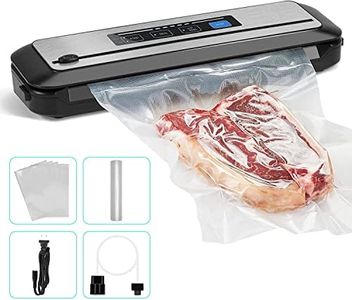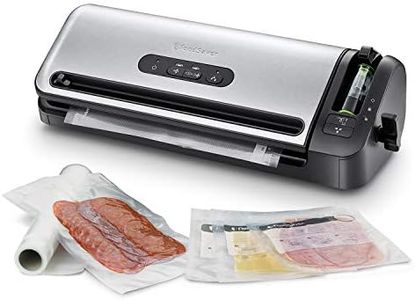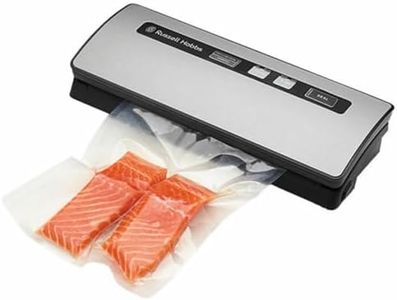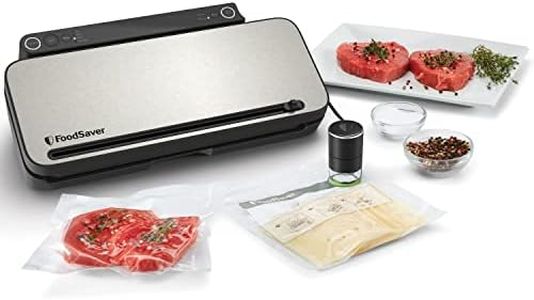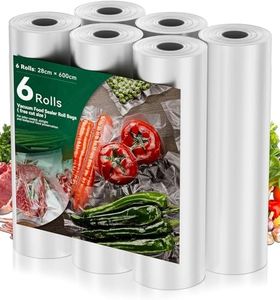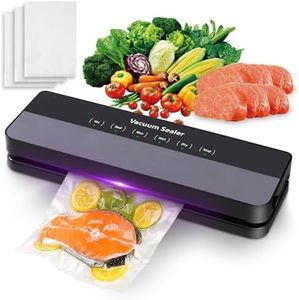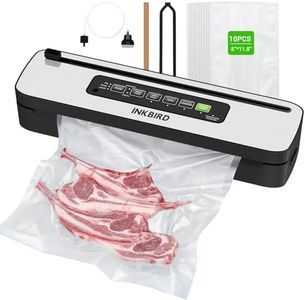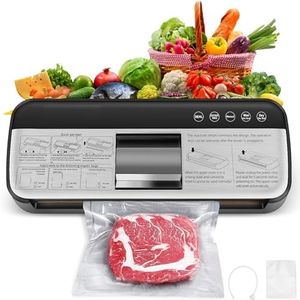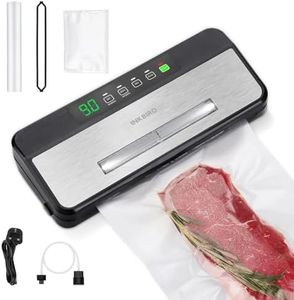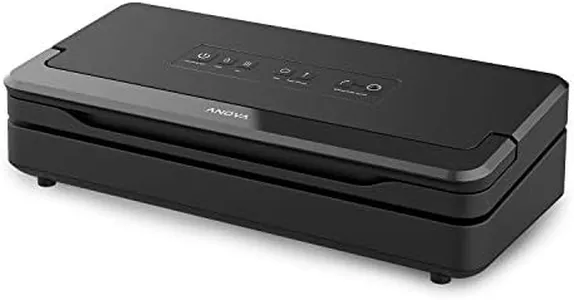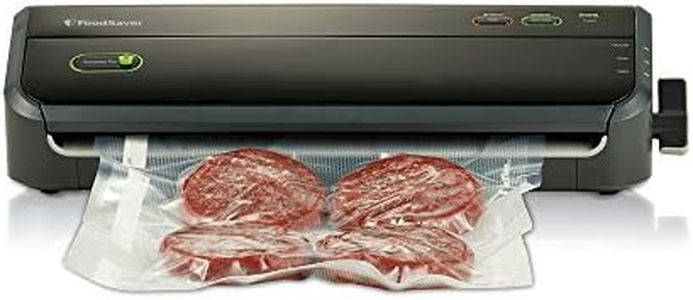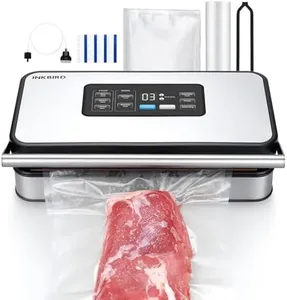We Use CookiesWe use cookies to enhance the security, performance,
functionality and for analytical and promotional activities. By continuing to browse this site you
are agreeing to our privacy policy
10 Best Vacuum Sealers
From leading brands and best sellers available on the web.Buying Guide for the Best Vacuum Sealers
Vacuum sealers are a great tool if you want to keep food fresh for longer, prevent freezer burn, or store items efficiently. When choosing a vacuum sealer, you want to think about how often you plan to use it, what types of food or items you will seal, and the space you have available for the machine. Understanding the main specifications will help you pick a model that fits smoothly into your kitchen and meets your needs comfortably.Sealing TypeThe sealing type refers to how the vacuum sealer removes air and seals the bag. There are primarily two types: external (sometimes called external suction or suction nozzle) and chamber vacuum sealers. External types are compact and best for basic home use, like sealing solid foods and occasional sous-vide. Chamber sealers are larger and more powerful, suitable for sealing liquids and for frequent or bulk sealing tasks. Think about if you need to seal liquids or do a lot of batch work: if so, chamber might be better, otherwise, an external type is usually sufficient.
Seal WidthSeal width means how wide the sealing strip is, which affects the strength of the seal. Wider seals usually hold up better against leaks and long-term storage. Typical seal widths range from about 2 mm to 5 mm. If you plan to store food for a long time or freeze liquids, a wider seal is safer.
Bag CompatibilitySome vacuum sealers can only work with specially designed bags, while others can use generic bags or rolls. Using rolls lets you make custom-sized bags, which can save material and add flexibility. If you want to avoid being locked to specific or expensive bags, check that the sealer can use standard or generic bags, or that rolls are easy to use.
Suction PowerSuction power, often shown in inches of mercury (inHg) or kilopascals (kPa), indicates how effectively air is removed from the bag. Entry-level sealers typically offer around 12-15 inHg, while more robust models can exceed 20 inHg. Higher suction power is good if you want the tightest seal for long-term storage or if you plan to seal tough, thick bags, but for occasional home use, a moderate level is usually enough.
Manual vs. Automatic OperationOperation can be manual, automatic, or a mix. Automatic sealers do the job with the push of a button, which makes them easy to use with minimal effort. Manual modes give you more control over the process, which is useful for delicate or moist foods that need careful handling. If you value convenience, look for automatic features; if you want to seal a variety of items, manual control might be a better fit.
Size and StorageVacuum sealers vary in size from small handheld units to large, countertop models. Consider how much counter or storage space you have and how often you’ll use the sealer. If your kitchen is small or you want to store it away after each use, a compact model is ideal. Larger models may be heavier and harder to move, but better for regular or high-volume use.
Ease of CleaningSince food bits and liquids can get into the machine, ease of cleaning is important. Some models have removable drip trays or parts that are dishwasher safe, making them simple to clean. If you often seal moist foods or want minimal hassle after use, look for models designed for easy disassembly and cleaning.
